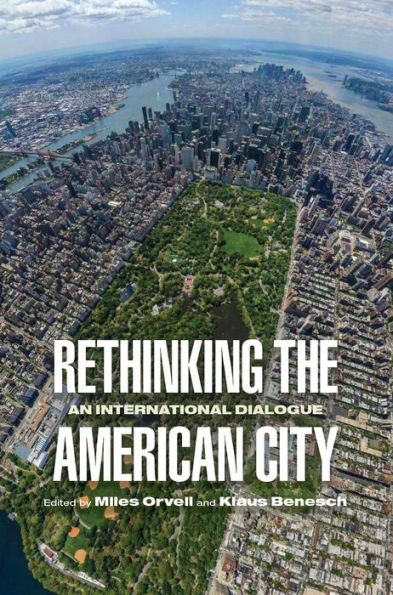Whether struggling in the wake of postindustrial decay or reinventing themselves with new technologies and populations, cities have once again moved to the center of intellectual and political concern. Rethinking the American City brings together leading scholars from a range of disciplines to examine an array of topics that illuminate the past, present, and future of cities.
Rethinking the American City offers a lively and fascinating survey of contemporary thinking about cities in a transnational context. Utilizing an innovative format, each chapter opens with an iconic image and includes a brief and provocative essay on a single topic followed by an extended dialogue among all the essayists. Topics range from energy use, design, and digital media to transportation systems and housing to public art, urban ruins, and futurist visions. By engaging with key contemporary concerns—public and private space, sustainability, ethnic and racial divisions, and technology—this volume illuminates how global society has imagined American urban life.
Contributors: Klaus Benesch, Dolores Hayden, David M. Lubin, Malcolm McCullough, Jeffrey L. Meikle, David E. Nye, Miles Orvell, Andrew Ross, Mabel O. Wilson, Albena Yaneva.
Whether struggling in the wake of postindustrial decay or reinventing themselves with new technologies and populations, cities have once again moved to the center of intellectual and political concern. Rethinking the American City brings together leading scholars from a range of disciplines to examine an array of topics that illuminate the past, present, and future of cities.
Rethinking the American City offers a lively and fascinating survey of contemporary thinking about cities in a transnational context. Utilizing an innovative format, each chapter opens with an iconic image and includes a brief and provocative essay on a single topic followed by an extended dialogue among all the essayists. Topics range from energy use, design, and digital media to transportation systems and housing to public art, urban ruins, and futurist visions. By engaging with key contemporary concerns—public and private space, sustainability, ethnic and racial divisions, and technology—this volume illuminates how global society has imagined American urban life.
Contributors: Klaus Benesch, Dolores Hayden, David M. Lubin, Malcolm McCullough, Jeffrey L. Meikle, David E. Nye, Miles Orvell, Andrew Ross, Mabel O. Wilson, Albena Yaneva.

Rethinking the American City: An International Dialogue
232
Rethinking the American City: An International Dialogue
232
Product Details
| ISBN-13: | 9780812209013 |
|---|---|
| Publisher: | University of Pennsylvania Press |
| Publication date: | 11/19/2013 |
| Series: | Architecture, Technology, Culture Series |
| Sold by: | Barnes & Noble |
| Format: | eBook |
| Pages: | 232 |
| File size: | 2 MB |
